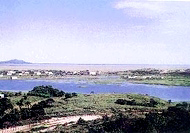
The United Nations Development Program (UNDP) yesterday promised to work with countries in Northeast Asia to boost development along the Tumen River.
The decision to get more involved in the Tumen River Area Development Program (TRADP) opens the door for the five member countries to devise and decide the future of the Tumen program, said UNDP senior official Khalid Malik.
He made the remarks yesterday at the 7th meeting on TRADP, which was attended by vice-ministerial officials from member countries.
The TRADP is an ambitious project by China, the Democratic People's Republic of Korea (DPRK), the Republic of Korea (ROK), Mongolia and Russia to create a free-trade zone in Northeast Asia. The TRADP is being touted as the "future Rotterdam" for Northeast Asia.
The countries and the UNDP envision a 20 year project, and a price tag of more than US$30 billion, to transform the Tumen River area into the transportation and trading hub for Northeast Asia.
Since the UNDP first began looking at the Tumen River in December 1991, six meetings have been held to co-ordinate activities.
"The TRADP has provided an effective platform for co-operation among all member countries," said Chinese Vice-Minister of Commerce Wei Jianguo yesterday at the meeting.
Should the six countries continue to work together, the economic advantages could benefit all.
"The TRADP is at the core of regional co-operation in Northeast Asia and is an important component in revitalizing the old industry base in Northeast China," Wei added.
The Chinese Government has taken measures to reinvigorate industry in the area dominated by large and medium-sized State-owned enterprises.
Wei said international co-operation along the Tumen River will involve three basic steps.
From 2005 to 2010, the international co-operation should focus on such infrastructure projects as railways, ports and roads to better link member countries.
Tourism and trade should receive priority in this period of development, he added.
From 2010 to 2015, China, Russia and the DPRK should build a sub-regional economic, technological and trade zone, said Wei.
Meanwhile, China and Mongolia, DPRK and ROK, Russia and DPRK and Japan and DPRK, should expand bilateral co-operation.
From 2015 onwards, all member countries should work towards building a free trade zone in Northeast Asia, said Wei.
While full development of the Tumen River area is still far from what the UNDP expected, Wei called on all members to have confidence and be patient.
Wei predicted that the program will witness rapid development in one or two years.
(China Daily July 9, 2004)
|

